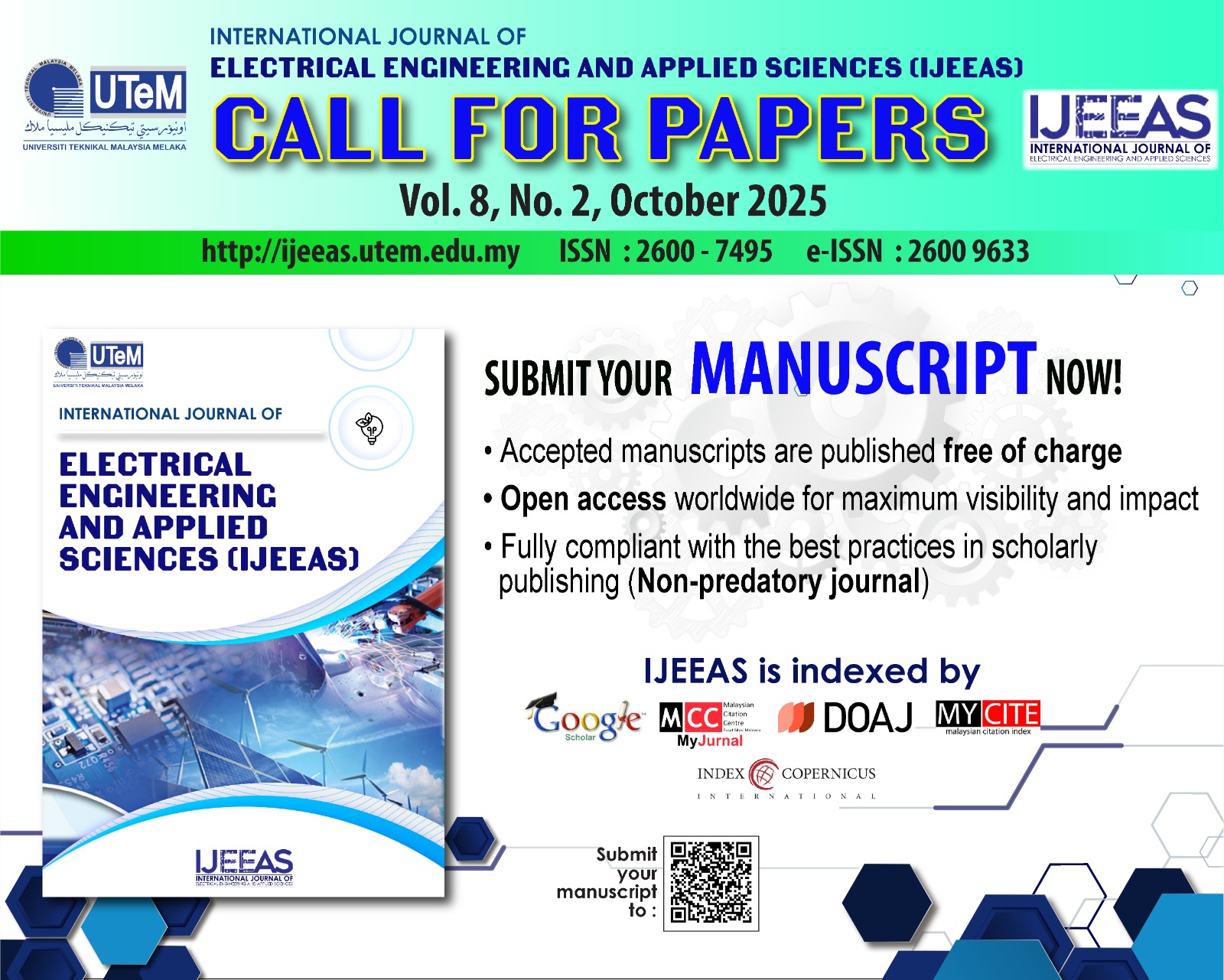The Efficiency of Dyes Sensitized Solar Cells Using Different Sensitized Dyes
Keywords:
Dyes, solar cell, efficiency, semiconductorAbstract
Manufacturing techniques of solar cell have been developed rapidly since their first appearance. Dyes sensitized solar cell (DSSC) is a modern technique of solar cell .It optimized by their low manufacturing cost and the high power conversion. In this paper three of DSSC were fabricated using three different sensitized dyes Cumarin 500, Alcian Blue 8GX and Bangal Ross B Sodium Salt. The absorbance of each DSSC was determined by ultraviolet- visible spectrometer. The open circuit voltage and current were measured for each sample to determine which of the dyes has the best efficiency of power conversion. The results also obtained the fill factor for each of DSSCS. The results showed the fill factor and the bandgap of each sample. The voltage and current results reflect that Bangal Ross has the highest efficient of the other dyes.
Downloads
References
[online -2019] https://www.gamry.com/application-notes/
EarlyHistory Archived 28 March 2016 at the Wayback Machine. Workspace.imperial.ac.uk. Retrieved on 30 May 2013.
O'Regan, Brian; Grätzel, Michael (1991). "A low-cost, high-efficiency solar cell based on dye-sensitized colloidal TiO2 films". Nature. 353 (6346): 737–40.
Liviu Cosmin Cotet, Lucian Baia (2019), Insights Into Graphene-Based Materials as Counter Electrodes for Dye-Sensitized Solar Cells, in book: Dye-Sensitized Solar Cells,pp.341-396,DO 10.1016/B978-0-12-814541-8.00010. Lucian Cristian Pop
Dye-Sensitized vs. Thin Film Solar Cells", European Institute for Energy Research, 30 June 2006.
Sofia Abid. (2017). Properties of TiO2 and Dye in Enhancement of Dye-Sensitized Solar Cell's Efficiency. School of Science and Engineering - Alakhawayn University. 8.
Ganapathy Veerappan, ... Bheesetti Gowreeswari (2019) Economical and Highly Efficient Non-Metal Counter Electrode Materials for Stable Dye-Sensitized Solar Cells, in a book Dye-Sensitized Solar Cell pp.397-435, Lucian Cristian Pop.
Md.K.Nazeeruddin and Etienne Baranoff. (2011). Dye-Sensitized Solar Cells : A brief Overview. Solar Energy. 85: 1172-1178.
Kimberly Patch, "Solar cell doubles as battery", Technology Research News, 2006.
Holliman; A. Connell; M.L. Davies; M.J. Carnie; T.M. Watsonin Functional Materials for Sustainable Energy Applications, (2012),ISBN: 9780857090591.
Sawsan Ahmed Elhouri. (2018). The Value of Efficiency and Energy Gap for Different Dye Solar Cells. Global Journal of Engineering Science and Researches. 5(8): 115-121.
R. Syafinara*, N. Gomesha, M. Irwantoa, M. Fareqa, Y.M. Irwana. (2015). Chlorophyll Pigments as Nature Based Dye for Dye-Sensitized Solar Cell (DSSC). Journal of Energy Procedia. 79: 896 – 902.
Sakina Ibrahim Ali, Mubarak Dirar Abdallah and Sawsan Ahmed Elhouri Ahmed. (2016). The Relationship Between Energy Gab and Efficiency in Dye Solar Cells. International Journal of Current Trends in Engineering and Research. Issue 7. 2: 82 – 89.
K.Takechi, R.Muszynski and P.V.Kamat. (2009). Fabrication procedure of dye-sensitized solar cells. www3.nd.edu/pkamat/pdf/solarcell.pdf.
Arini Nuran Binti Zulkifili, Terauchi Kento, Matsutake Daiki, and Akira Fujiki. (2015). The Basic Research on the Dye-Sensitized Solar Cells(DSSC). Journal of Clean Energy Technologies. 5: 382-387.
Askari Mohammad Bagher, Mirzaei Mahmoud Abadi Vahid and Mirhabibi Mohsen. (2015). Types of Solar Cells and Application. American Journal of Optics and Photonics. Vol.3. 5: 94-113.
Khushboo Sharma, Vinay Sharma & S. S. Sharma,(2018)” DyeSensitized Solar Cells: Fundamentals and Current Status, Nanoscale Research Lettersvolume vol(13) issu(1),(2018).
Downloads
Published
How to Cite
Issue
Section
License
Authors who publish with this journal agree to the following terms:
- Authors retain copyright and grant the journal right of first publication with the work simultaneously licensed under a Creative Commons Attribution License that allows others to share the work with an acknowledgement of the work's authorship and initial publication in this journal.
- Authors are able to enter into separate, additional contractual arrangements for the non-exclusive distribution of the journal's published version of the work (e.g., post it to an institutional repository or publish it in a book), with an acknowledgement of its initial publication in this journal.
- Authors are permitted and encouraged to post their work online (e.g., in institutional repositories or on their website) prior to and during the submission process, as it can lead to productive exchanges, as well as earlier and greater citation of published work (See The Effect of Open Access).







